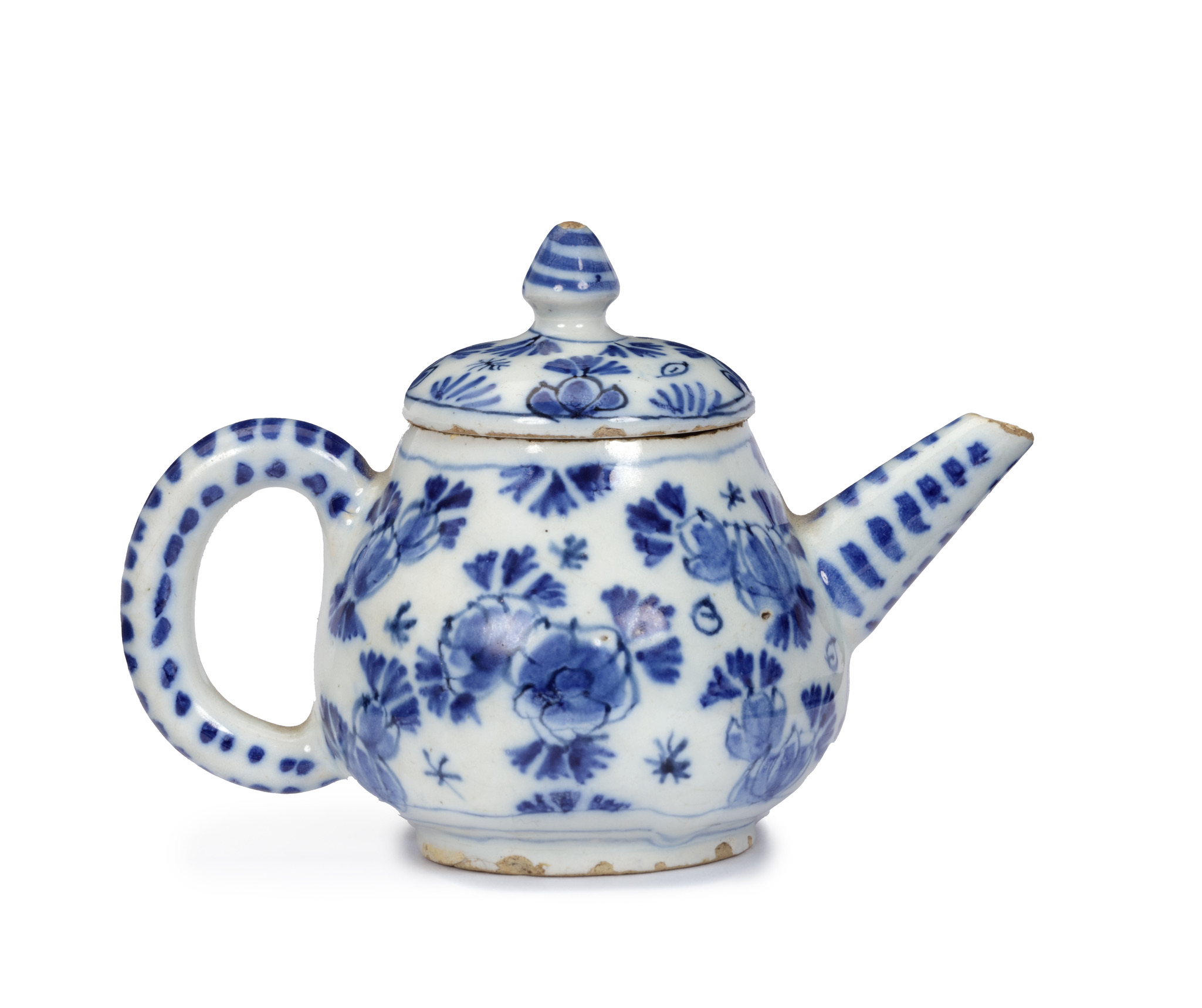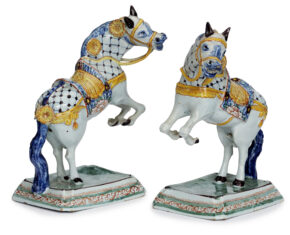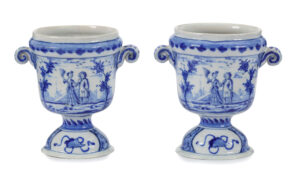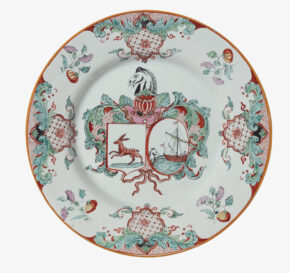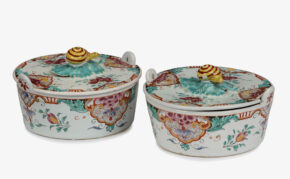![]()
Images on this website are licensed under a
Creative Commons Attribution-NoDerivs 3.0 Unported License.
OBJECT
D2416. Blue and White Teapot and Cover
Delft, circa 1700
The spherical body and cover painted with sprigs and flowering plants, the loop handle and spout with a border of stripes, and a triangle-shaped knop encircled with a continuous line.
DIMENSIONS
Height: 7.2 cm. (2.8 in.)
PROVENANCE
Bernard C.M. Grijpma Kunst en Antiek, 1998; Private collection
NOTE
Tea and coffee were first imported from China to Holland by the Dutch East India Company (VOC) in the last quarter of the seventeenth century. At the time, it could take up to two years for the Dutch trading ships to complete a round trip. Drinking tea was initially a luxurious pastime reserved for the elite. The practice of drinking tea became increasingly fashionable amongst the upper class who expressed their good taste by acquiring the necessary accoutrements. In response to the demand for tea wares, Delftware factories produced magnificent objects for tea services. Tea imports rapidly became one of the most profitable traded commodities. By the second half of the eighteenth century, the consumption of tea spread to every social class and became an indispensable article to daily life. By the end of the eighteenth century, almost every household owned a tea service.
Early teapots are generally of a small size, not only because tea was an exotic and expensive luxury and consumed sparingly, but also because these teapots were used as infusion pots from which a small portion of the strong brew would be poured into a cup and then diluted with hot water from a kettle. The present teapot, however, is particularly small and is referred to as a ‘tasting pot.’ As described in the exhibition catalogue, Thema thee: de geschiedenis van de thee en het theegebruik in Nederland, Rotterdam (Museum Boijmans van Beuningen) 1978, p. 32, the hostess would offer several blends in these small pots to be tasted by the guests so that they might select the one they would like to drink. K. Duysters, in Theepotten steengoed, Roodstenen theepotten uit Yixing en Europa, Arnhem (Historisch Museum het Burgerweeshuis) 1998, p. 31, comments further that tasting pots were brought along to the tea shops by ladies in order to sample the teas before choosing the kind they wished to buy.

